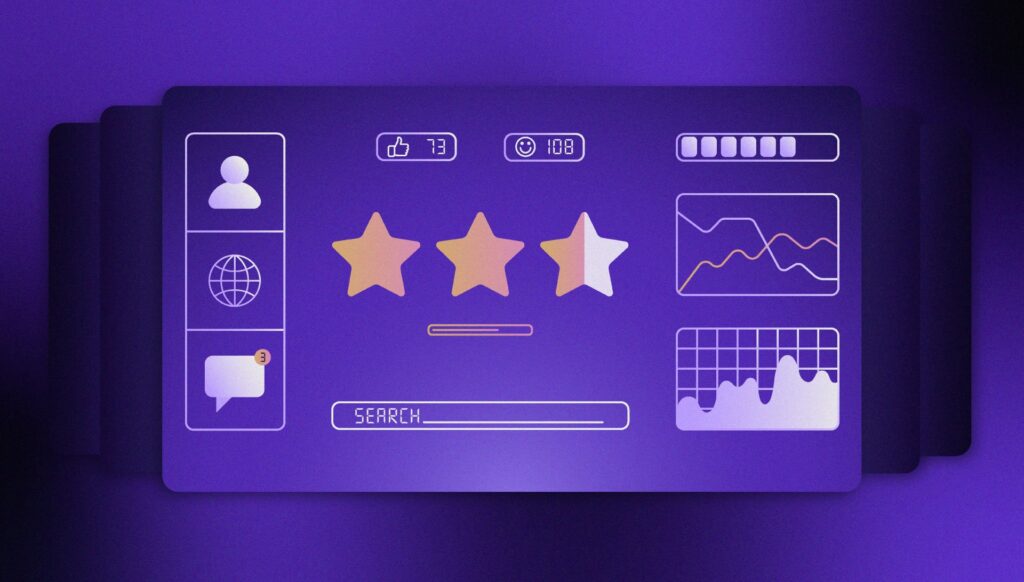The role of data analytics in designing powerful user experiences
It’s long been an industry norm that enterprise products do not have to pay quite as much attention to user experience design as consumer products since their primary focus is the functionality of their offering, not the ease of use or aesthetic. These tools are usually used by enterprise employees on corporate networks with help desks at their disposal. However, when the world switched to working from home there became an urgency to create intuitive workflows and engaging experiences due to the lack of help from fellow colleagues or IT.
With consumer apps, when the user experience design is confusing – for instance being unable to find the navigation bar or the color of the text is not easy on the eyes – they are likely to lose interest and exit the website or application. 40% of users exit a website if the design is not appealing. However, if the design, navigation, and text are user-centric, they are more likely to explore the website and dig deeper to understand the offerings. It is apparent that this is equally true for driving up the usage of enterprise apps too.
User experience design is crucial in both inward-facing enterprise tools and external-facing enterprise apps and sites. The key question is, how does one capture the essence of where users find delight in their experience?
User experience design is not about just creating attractive designs. Designers need to fully understand the product in question, its users, goals, and blend it with beautiful visuals. Analytics play a huge part in creating powerful experiences since it removes the guesswork from the process and gives designers clarity on what a user needs.
There are two primary ways to collect data – qualitative and quantitative. Quantitative data is measurable and is based on certain specified metrics. Analytics tools and customer surveys are used to collect this data. On the other hand, qualitative data enables designers to find out what part of the product offers maximum value to the user. This data can be collected through user interviews, feedback, and surveys. Designers must use a combination of both to get a holistic picture while creating the user experience.
Role Of Data Analytics In Designing User Experiences
1. Improve design and content
Let’s take the example of RS Components, a leading distributor of electrical, electronic, and mechanical components. They used to receive millions of visitors on their eCommerce site, but users found poor site search and product information on their website frustrating, ultimately resulting in a reduction in site visitors and negatively impacting sales.
Based on the customer feedback, online surveys, and discussions in forums, RS Components identified the key issues that impacted the experience and revamped it on their website. The change enabled them to exceed their financial target by 42% and resulted in massive growth in conversion.
How RS Components used data analytics to improve user experience
With data analytics, designers can gauge what part of the website or app interests the users the most. They can leverage data analytics to understand user behavior and personalize the experience. Analytics will help designers build an intuitive design that appeals to everyone.
2. Focus on the right problems
A designer might face multiple issues, especially when a new version of the product is about to be launched. What problems are more important? Designers can leverage analytical tools to prioritize customer feedback and determine the most common or major issues that affect the user’s experience. These insights can help them create feature lists mapped back to releases and schedules with greater assurance of product acceptance on release.
3. Create a seamless experience
A user expects a consistent experience across all touchpoints in their journey with the product. Today those touchpoints could range from desktop apps to web browsers, mobile apps, and increasingly wearable devices. Designers can collect the data received from these touchpoints to understand their habits and challenges.
For example, it could reveal that many users who try to access their enterprise product through their phones are unable to login. Based on this insight the designer can simplify the mobile login process. The objective is to make the experience hassle-free and so simple that even a child can do it without guidance.
4. Personalize the experience
Users want a personalized experience due to the amount of choice that is offered to them in their daily life. With the help of data segmentation, designers can hyper-personalize the experience. For example, a user belonging to the technology industry should see different banners and messaging on the website than someone who belongs to the manufacturing industry.
5. Gauge what interests the users
Designers need to be continuously enriching their product or app to deliver increasing value to the users. Giving the user an experience that grows with them is one way to build a robust long-term relationship.
Conclusion
Data analytics play a major role in designing powerful user experiences as it helps designers make informed design decisions that align with the user’s goals.
At Windmill designers are constantly using data to design. From the initial discovery phase involving surveys, interviews, and usability testing to capture qualitative and quantitative data, to the continuous updating of applications based on user feedback. User experience is ever-changing and never complete. This mindset allows Windmill designers to deliver delightful experiences in every medium and market.




